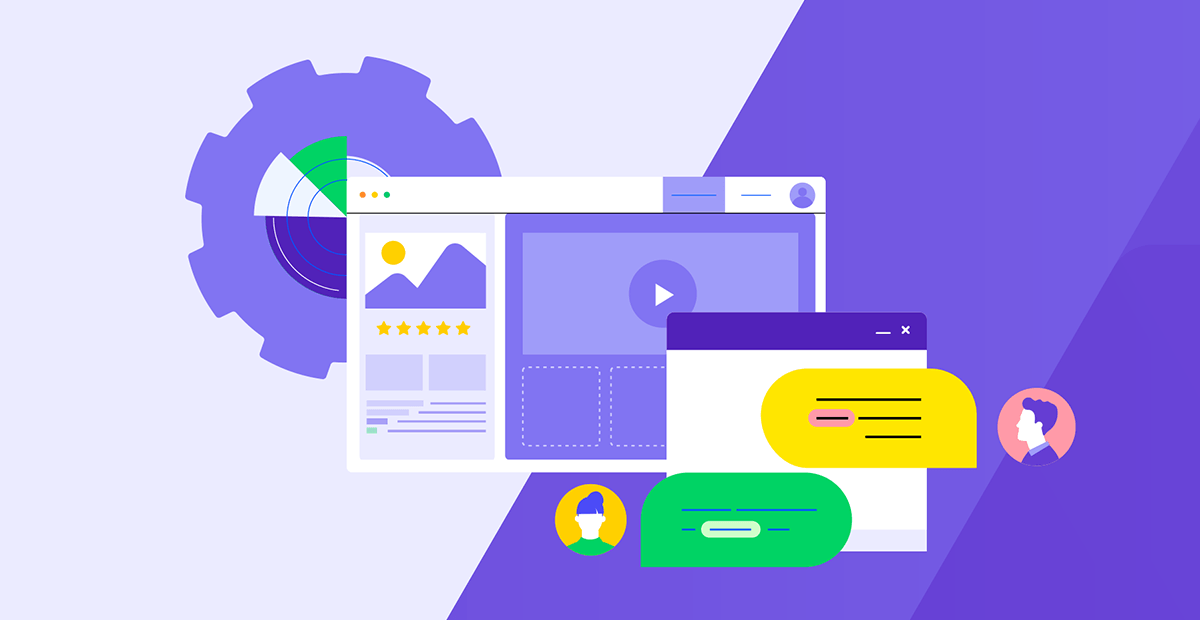2006 Called. It Wants Its Website Back: A Practical Guide for Painless Modernization to a Multi-channel Digital Experience

These practical tips can help you modernize your digital marketing strategy, know what to look for in tools, and prepare for your transition into a more modern multi-channel digital experience.
Let’s face it. You built your web presence years ago, and while it has served its purpose, it’s far from perfect. It’s slow, lacks modern integrations with your marketing stack and doesn’t provide the multi-channel experience today’s customers expect across multiple digital channels. The thought of modernizing can be overwhelming, but don’t worry—you’re not alone.
Many businesses find themselves in this exact situation: attached to a website that no longer meets their needs but unsure of how to take the leap into modernization. The good news is that while it may seem daunting, modernizing your legacy website is a journey that can transform your digital presence and your business as a whole. It can also improve customer engagement and align with a broader multichannel marketing strategy.
This guide explores the what, why and how of website modernization. We’ll provide practical tips and key considerations for defining your modernization strategy, choosing the right tools and platforms, and preparing for a more seamless transition.
Understanding the Costs of Keeping Your Legacy Site
Before we dive into the modernization process, it’s important to understand why maintaining a legacy website is no longer a viable option. While it may be tempting to hold onto what’s familiar, the costs of doing so can be significant.
First and foremost, an outdated website can negatively impact your user experience and customer satisfaction. Slow load times, clunky navigation and lack of mobile responsiveness can frustrate users and drive them away. In fact, studies show that a one-second delay in page response can result in a 7% reduction in conversions.
Moreover, an old website likely lacks the functionality and integrations needed to effectively connect with your marketing technology (martech) stack. This can lead to inefficiencies, data silos and missed opportunities to personalize and optimize the customer journey.
Perhaps most critically, a legacy site often fails to provide the multi-channel experience that modern consumers demand. Today’s customers expect to engage with your brand seamlessly across web, mobile, social media and beyond. If your site isn’t equipped to deliver this, you risk falling behind your competitors.
Envisioning Your Modernized Digital Experience
So, what does a modernized website look like? Before you start the practical steps of overhauling your site, it’s crucial to define your vision for your new omnichannel customer experience.
At its core, your modernized site should align with your business goals, user needs and brand identity. It should be:
- Fast and performant, with quick load times and smooth navigation.
- Mobile-friendly, with a responsive design that adapts to any screen size.
- Integrated with your martech stack, enabling more seamless data flow and leveraging data for personalized experiences.
- Multi-channel ready, with the ability to deliver content and experiences across across digital channels and support consistent messagin
- Scalable and flexible, with a modular architecture that can grow and adapt over time.
- Easy to manage, with a user-friendly CMS that empowers your team to keep content fresh.
- Secure and compliant, with robust measures to protect user data and meet regulatory requirements.
Beyond these functional requirements, your modernized site should also embody your unique brand personality and value proposition. It should tell your story, showcase your offerings and reflect a clear brand experience that helps build trust and credibility with your audience.
Choosing the Right Digital Experience Platform (DXP)
One of the most critical decisions in your modernization journey is choosing the right digital experience platform (DXP) to power your new site. A DXP is an integrated set of technologies that enables organizations to build, deploy, and continuously improve websites, portals, mobile apps and other digital experiences.
Unlike traditional content management systems (CMS), which primarily focus on web content management, DXPs provide a more holistic and flexible approach to delivering digital experiences. They often include capabilities for content management, personalization, ecommerce, marketing automation, analytics and more.
When evaluating DXP solutions, consider the following key factors:
- Scalability: Can the platform scale to meet your future growth and traffic needs?
- Flexibility: Does it offer the customization and integration options you require?
- Usability: Is it easy for your team to learn and use, even for non-technical users?
- Multi-channel capabilities:: Can it deliver content and experiences across web, mobile, social media platforms and other marketing channels?
- Personalization and optimization: Does it provide tools for tailoring experiences based on user data and behavior?
- Analytics and insights: Can it give you the data you need to continually measure and improve performance?
The right DXP for your organization will depend on your unique requirements, budget and existing tech stack. Take the time to thoroughly evaluate your options and choose a platform that will empower you to achieve your digital experience goals and desired business outcomes.
Designing and Building Your New Digital Experience
With your vision defined and your DXP selected, it’s time to start bringing your new site to life. This is where you’ll take all the shortcomings of your legacy site and turn them into strengths, designing and building a digital experience that wows your users and drives your business forward.
Defining Your Information Architecture
Start by mapping out your site’s information architecture. This includes your content hierarchy, navigation structure and URL schemas. The goal is to create an intuitive, logical structure that helps users find what they need and guides them through your desired customer journeys.
Creating Modular, Reusable Content
Next, develop a content strategy that focuses on creating modular, reusable content components. By breaking your content into discrete, structured elements (rather than monolithic pages), you enable greater flexibility and efficiency in how that content is managed and delivered across different channels.
Designing for User Experience
With your content strategy in place, turn your attention to design. Create wireframes and mockups that prioritize simplicity, clarity customer engagement and ease of use. Use design principles like visual hierarchy, whitespace and clear calls-to-action to guide users through your content and drive them toward conversion.
Developing with Flexibility in Mind
As you move into development, build with flexibility and scalability in mind. Use modular development practices and choose frontend frameworks that enable you to create reusable components and patterns. This will make your site easier to maintain and evolve across multiple channels over time.
Integrating with Your Martech Stack
Importantly, make sure your new site integrates well with your other marketing technologies. This includes your CRM, CDP, marketing automation platform, ecommerce system, analytics tools and more. By enabling data to flow freely between these systems, you can create a more unified, personalized and measurable digital experience.
Managing the Migration and Launch
With your new site built, it’s time to plan for the transition from your legacy platform. This is a critical phase that requires careful planning and execution to facilitate a smooth launch and minimize disruption to your business.
Key steps in the migration and launch process include:
- Content migration: Moving content from your old site to your new DXP, optimizing it for the new structure and design.
- URL mapping and redirects: Creating a map of your old URLs to your new ones, and setting up 301 redirects for a more seamless transition for users and search engines.
- Testing and QA: Thoroughly testing your new site across devices, browsers and user scenarios to identify and fix any issues pre-launch.
- Training and onboarding: Fully training your team on your new DXP so they’re ready to manage the site post-launch.
- Launch planning: Developing a detailed plan for the day of launch, including contingencies for any potential issues.
- Post-launch monitoring: Closely monitoring site performance, user feedback and key metrics in the days and weeks after launch, and quickly addressing any problems that arise.
Concluding Thoughts
Modernizing your legacy website is no small undertaking. It requires significant investment, effort and organizational buy-in. But in today’s digital-first world, it’s no longer optional. As customer expectations continue to rise and digital touchpoints multiply, having a modern, flexible and integrated digital presence is critical to staying relevant and competitive. By following the steps outlined in this guide, you can navigate the modernization journey with confidence and emerge with a digital experience that truly sets you apart.

